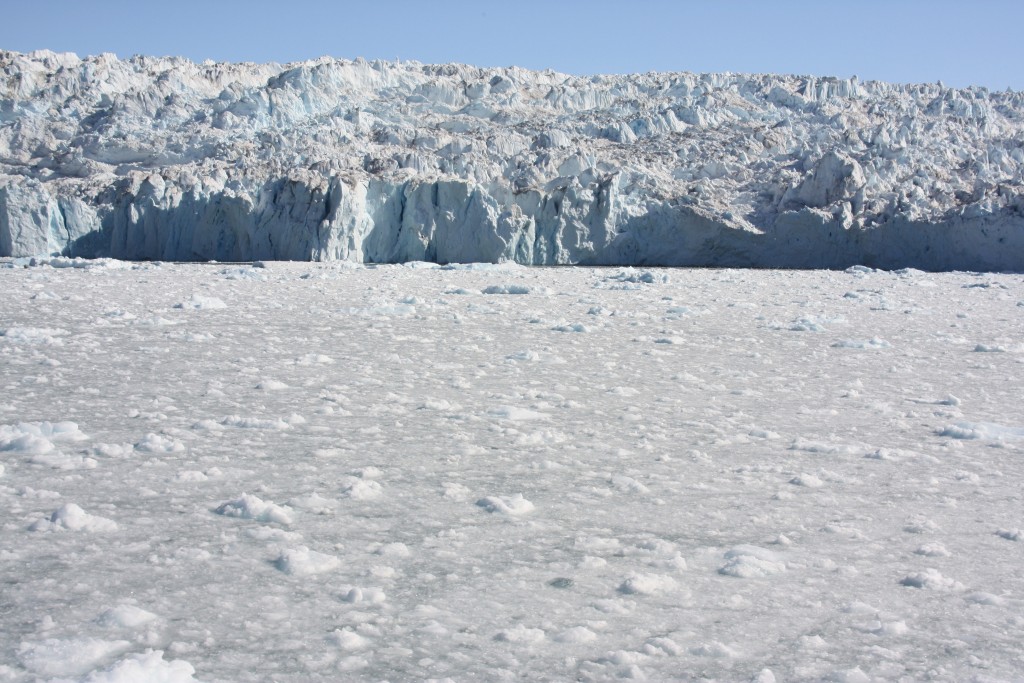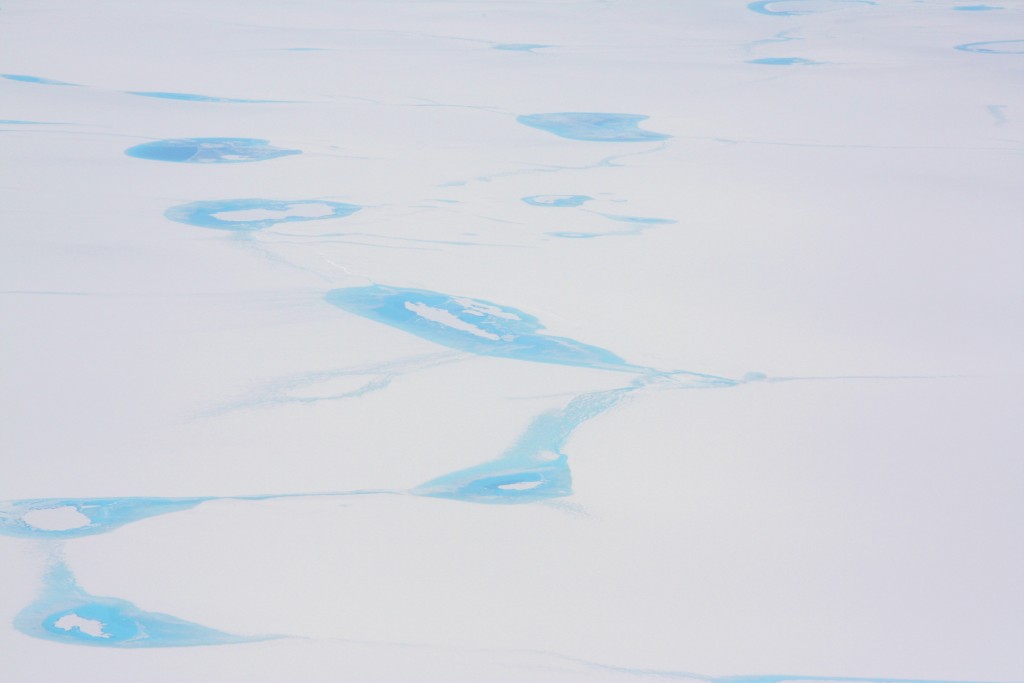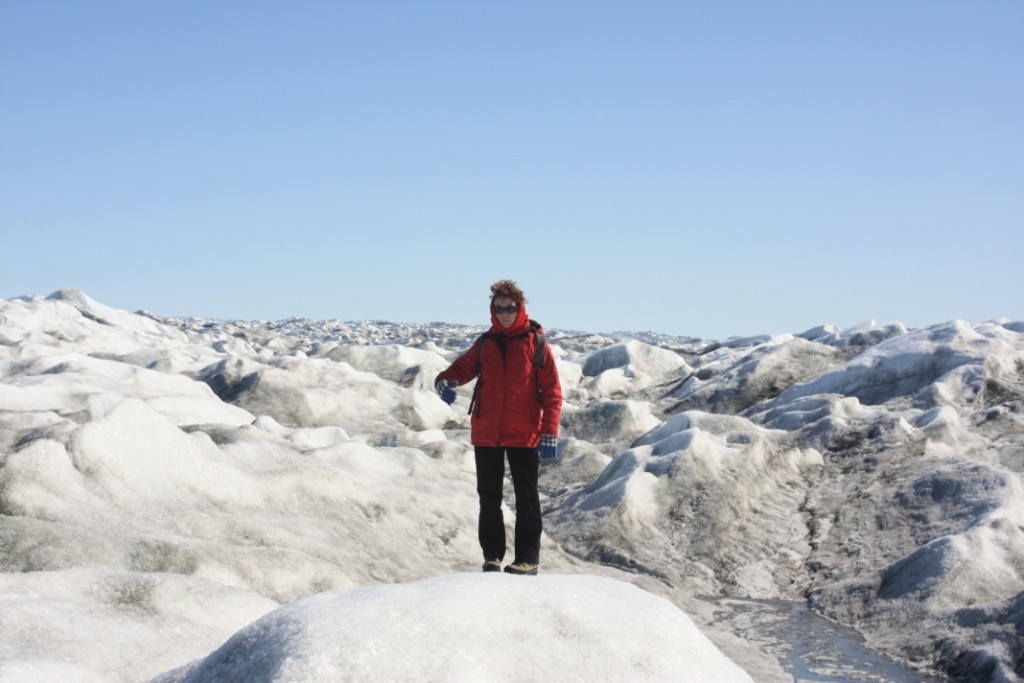Greenland ice a speedy chute to rising seas?
As I checked through the news agencies to keep tabs on what’s been happening with Greenland as 2016 kicks off, the only agency piece I came across is a German story (on AFPD) on how climate change is apparently bringing the world’s biggest island an “economic upswing”. New fish species off the coast, better conditions for agriculture and exportable powdered rock from retreating glaciers are listed amongst the benefits.
No mention of a study published in Nature Climate Change this week showing that recent atmospheric warming – especially the exceptional summers in 2010 and 2012 – are reducing the ability of some layers of the giant ice sheet to store meltwater. That, in turn, can mean runoff is released into the ocean faster than previously assumed, rushing down a kind of icy chute. Clearly, this has considerable implications for global sea level rise.
Snow sponge
Approximately half of Greenland’s current annual mass loss is attributed to runoff from surface melt. At higher elevations, the melt does not necessarily equal runoff, because meltwater can refreeze in the porous snow and firn near the surface. Horst Machguth from the Geological Survey of Denmark and Greenland, the lead author of the study, explains the background in a news release by CIRES, the Cooperative Institute for Research on Environment Sciences, Boulder Colorado: “The near-surface of the large ice sheet interior is comprised of snow that is slowly being converted into glacier ice. This porous firn layer can be up to 80 m thick,” he writes. Recent studies indicated that this firn is an important buffer against contributing to sea level rise for decades to come, because it absorbs and stores the meltwater like a sponge, refreezing it to form ice layers as it percolates down from the ice sheet surface. But the authors say the new study shows this may not be the case.
VIEW: Animated graphic illustrating the “sponge” effect on the Greenland Ice Sheet by NASA and CIRES
After the Greenland Ice Sheet was hit by a series of warm summers, it was unknown how the firn reacted to exceptional amounts of meltwater, says Machgut. The research aimed to clarify whether the firn was indeed capable of retaining the meltwater, or whether the sponge had been “overwhelmed” by all the extra water.
Icy chute
The scientists drilled cores to sample the firn at sites where similar cores had been drilled 15 to 20 years ago. They found that the amount of refrozen ice layers in the firn had increased substantially over the past two decades in many places, but not everywhere. Cores drilled at lower elevations suggested the recent exceptional meltwater amounts had only trickled through to shallow depths within the firn, conglomerating into massive ice layers directly below the ice sheet surface.
“It appears that the firn was overwhelmed by the melt to a degree where so many ice lenses had formed that they started to hinder percolation of further meltwater. Initially small ice lenses grew to form ice layers of several meters in thickness that act as a lid on top of otherwise sponge-like firn. Radar measurements identified that these massive ice lenses were continuous over tens of kilometres,” says Dirk van As, a co-author of the study from the Geological Survey. “Surface meltwater wants to refreeze in firn locally, which it does at higher elevation, but at lower elevations it hits that lid of ice and is forced to stay at the surface where it cumulates.”
Satellite images show that meltwater then formed rivers on the surface flowing towards the margin of the ice sheet.
More data required
“In contrast to storing meltwater in porous firn, this mechanism increases runoff from the ice sheet,” says CIRES researcher Mike MacFerrin, a second author on the study. “This process has not previously been observed in Greenland. The extent of this ice lid capping the ice sheet firn remains unknown. For this reason, the total amount of additional ice sheet runoff associated with this newly observed process cannot yet be quantified.”
The scientists are now combining their core data with radar measurements from NASA, which cover the entire ice sheet. They say similar changes in firn structure have been observed on various ice caps in the neighbouring Canadian Arctic, which indicates the phenomenon could be widespread in Greenland. Only west Greenland was covered by the new study.
The Greenland ice sheet is already a great concern, with the melting ice rate increasing continually as the atmosphere and the oceans warm. As well as contributing to rising sea levels, the increase in runoff from the ice sheet could also result in feedback processes which could lead to even more melt in the future. The water running down the ice sheet can create darker, slushy channels, the scientists say, which can reduce the albedo effect of the ice sheet, its ability to reflect sunlight away from its surface. As more sunlight is absorbed instead of being reflected off, the surface temperature could warm further.
Given the huge significance of the Greenland ice sheet in terms of global sea level rise and its role in the global climate system, the findings of this study deserve a little more attention than being confined to the publications of the scientific communities.
But maybe potatoes from the “ice island” and mackerel and tuna off its snow-tipped coasts make for more striking headlines?




















Feedback